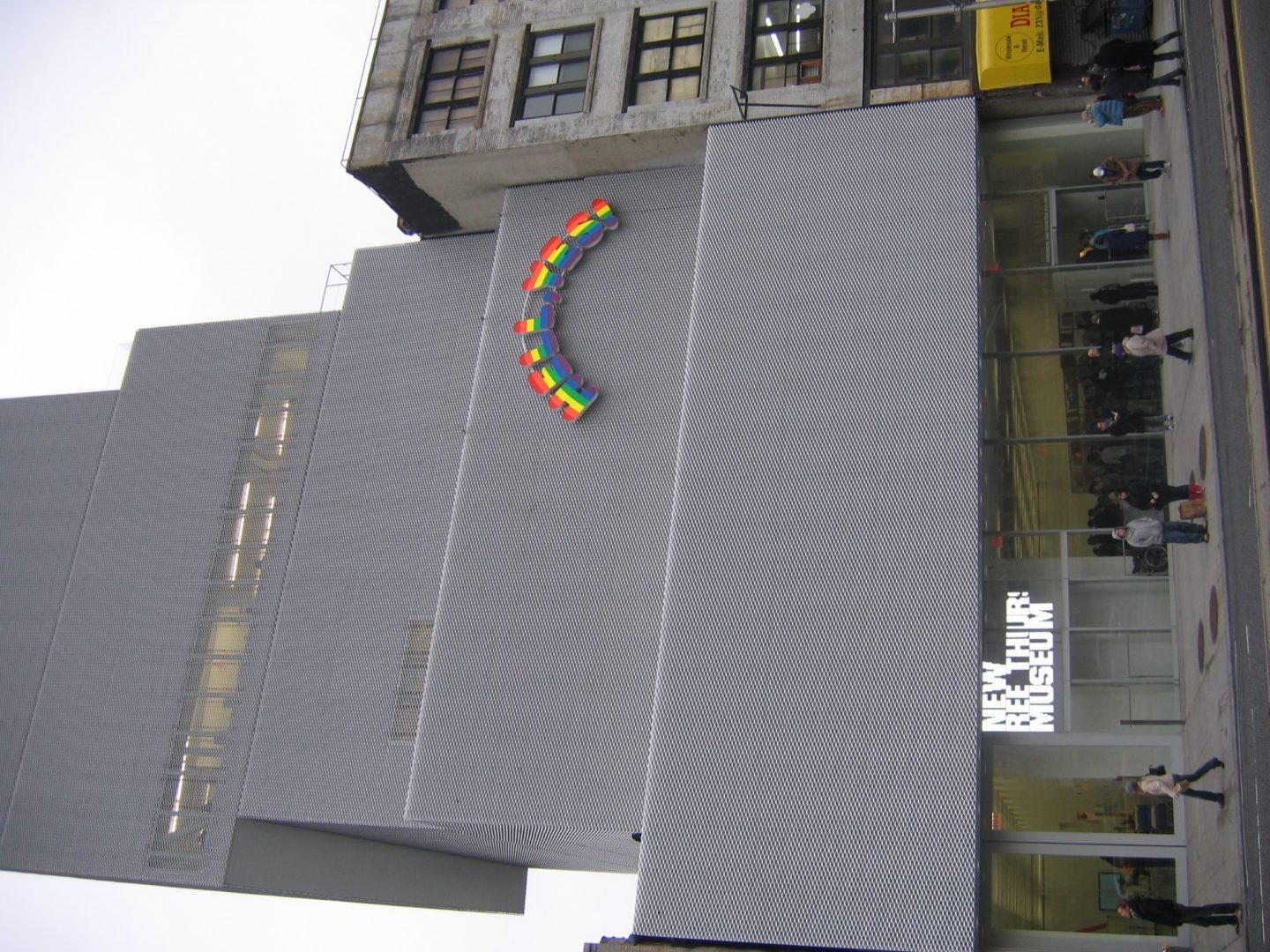The New Museum Unveiled on the Bowery
NMCA’s Brand New Compound Offers Smorgasbord of Modern Expression
May 30, 2011

Published: December 13, 2007
A bright rainbow-colored “Hell, Yes!” sign marks the spot of the brand new home of The New Museum of Contemporary Art (NMCA), which opened its doors on Dec. 1. The museum’s architectural design by Sejima + Nishizawa/SANAA, makes the building’s exterior appear to be seven aluminum boxes stacked haphazardly on top of each other. One of the only museums in NYC that features solely contemporary art, with its mission being “New art, new ideas,” the NMCA focuses on showing the works of lesser-known living artists. It’s a great place to check out the latest the art world has to offer.
The inside of the museum is white from floor to ceiling, except for the bright green interior of the elevators, and the multi-colored mosaics in the restrooms. The whiteness of the galleries offers a blank slate for the art to pop out. It is as if the museum is stepping back to make sure all of the visitors’ attention goes to the art. Four floors are designated for the galleries, and in the basement is the theater, which plays short films from various artists.
Currently on display in the glass-walled gallery in the back of the lobby is a video project from Young-Hae Chang Heavy Industries, “Black on White, Gray Ascending.” It’s a set-up of seven flat-screen TVs projecting different words of a story from seven perspectives with an original jazzy soundtrack playing around the room.
The main collection on display in the second, third and fourth floors of the museum until March 23, 2008, is called “Unmonumental: The Object in the 21st Century.” It is mostly made up of statues and other three-dimensional structures from 30 different artists placed openly around the floors. In this collection, there isn’t a work dated earlier than 2000.
The art in “Unmonumental” makes use of the floors, walls and ceilings. For example, on the second floor, there’s a piece by Martin Boyce labeled “We climb inside and everything else disappears,” which is a yellow hose on the floor coiled around itself and attached to a white deck chair that’s laid out on its side. On the same floor there is “Myth Monolith (Liberation Movement)” by Marc André Robinson. The piece is a precariously piled set of wooden chairs which curves up into the wall and back down towards the viewer, and that, when viewed at a certain angle, makes a circle. Hanging from the ceiling of the fourth floor is artist Sam Durant’s “Hacer es la Mejor Manera de Decir,” which roughly translates as “To Do Something is the Best Way to Say Something.” It resembles a mobile of items from a protest: a street barricade, bricks, a megaphone and a banner, all dangling from chains.
Indeed, much can be said with simple materials. This theme is continued in another of Durant’s works, “…For people who refuse to knuckle down,” consists of only a tall, black wired cage contrasted by a sign that says, “Obedience to the Law is Freedom.” In the center of the third floor stands “Untitled (Kerze)” by Urs Fischer, a wax sculpture of a nude woman propped on concrete blocks. The sculpture is aflame like a large candle, and the artist claims that it will not be completely melted before the end of exhibition. Upon entering the third floor, one hears the voice of a woman coming from the staircase behind the elevators. It is a recording of Sharon Hayes reciting love letters while wandering around the streets entitled, “I march in the parade of liberty, but as long as I love you I’m not free.”
The “Unmonumental” exhibit will be expanding in the upcoming weeks. On Jan. 16, collages will be installed on the now blank walls. Then on Feb. 13, there will be audio collages from thirteen different artists playing in the galleries. There will even be an online-only gallery from artists who use content they’ve found on the internet to create new montages. These works will be posted online at Rhizome.org/montage, starting Feb. 15.
The oldest piece in the museum is a neon sign of white letters and a pink triangle located in the staircase leading to the cellar that says, “Silence = Death.” This piece, by Act Up (Gran Fury), was first on display in 1987 in the front window of the museum’s previous location in SoHo to promote AIDS awareness, and to encourage discussion of the crisis within the government and the media. The museum decided to keep it as part of its permanent collection in order to show support in the fight against the spread of HIV/AIDS.
The floors of The New Museum are not very big, so there isn’t an overwhelmingly large number of pieces to see. Consequently, a visit to the museum won’t take an entire afternoon, but you can still partake in the art culture in an unpretentious environment.









